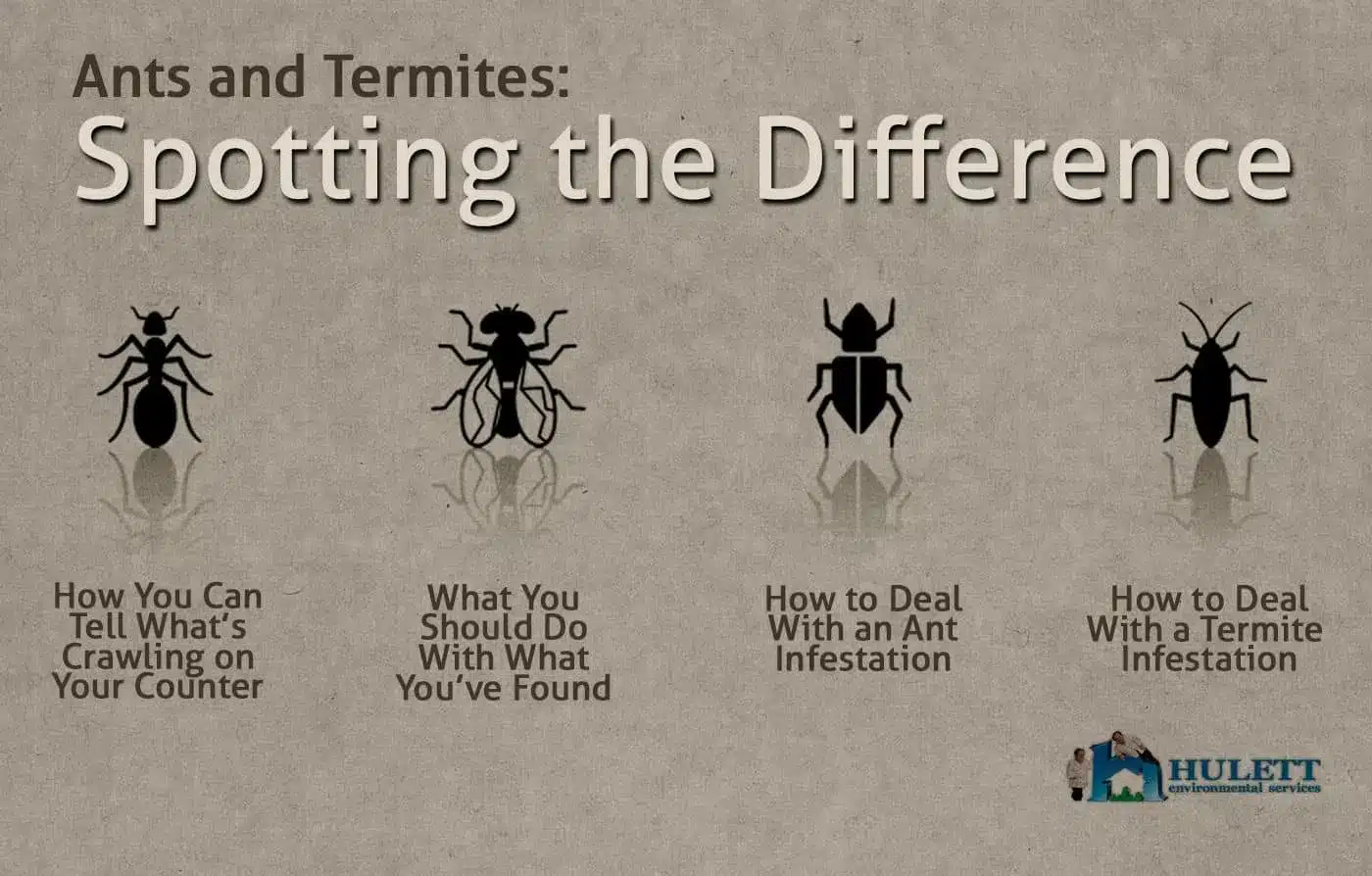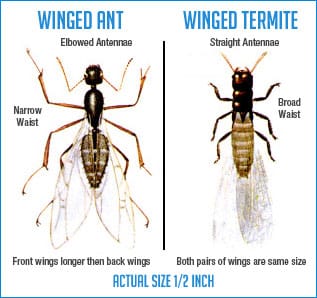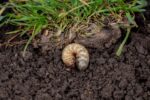
Ants and Termites: Spotting the Difference
Ants and termites are both incredibly common pests. They are so common and look enough alike (termites and flying ants in particular look eerily alike) that, at first glance, many people confuse the two. It is important, though, that you learn how to tell the two apart.
What Does the Science Say?
Even in terms of entomology, the differences between ants and termites are subtle. Both live in social swarms that typically revolve around the reproductive agent known as queens in ants and swarmers in termites. The Kansas State Entomology Department has a great page that goes into detail about the scientific differences between these two creatures.
How You Can Tell what’s Crawling on Your Counter

With Ants: the antennae are typically bent or arched. Their bodies narrow down at the waist and their frontal wings are larger than their wings in the rear.
With Termites: their antennae are usually straight. They have broad waists and their front and hind wings are of equal size. Basically, a termite looks like a chubby and more proportionate ant.
What You Should Do with What You’ve Found
Deciding how to handle an invasion of ants or termites is going to depend largely upon which pest is plaguing you and how many ants or termites you are dealing with. With that said, there are plenty of things you can do yourself to prevent and defeat both ants and termites.
How to Deal with an Ant Infestation
If you have an ant infestation, things can get a little bit tricky. While cleaning and sealing up your home can do quite a lot to deter ants from forming colonies inside your home, if the colony has already been built, more action is going to need to be taken. The good news is that you’re probably going to notice the flying ants for a few days while they explore your house and yard looking for places where they can mate and build new colonies of their own. You’ll start to notice “mounds” and that’s where you should focus your actions. Create a “toxin” of honey and artificial sweetener to attract the ants along with borax, which is deadly for ants but not for humans or most pets. You can also sprinkle diatomaceous earth on the mounds—it will dry them out and kill them when they come into contact with it. Also use turmeric. Turmeric is completely harmless for pets and humans and acts as an antiseptic and discourages flying ants.
How to Deal With a Termite Infestation
Even if you work hard to prevent termites from getting into your home, sometimes they win anyway. This is why if you start to notice termites in or around your home, you should hire a professional pest control expert to do a thorough inspection and help you come up with a plan for eradicating the infestation. A good expert will know how to “fix” an infestation in a way that has as little impact on you and your family as possible. It is important to act quickly. The less time these termites and flying ants have to crawl over your walls, the easier it will be to get rid of them.



